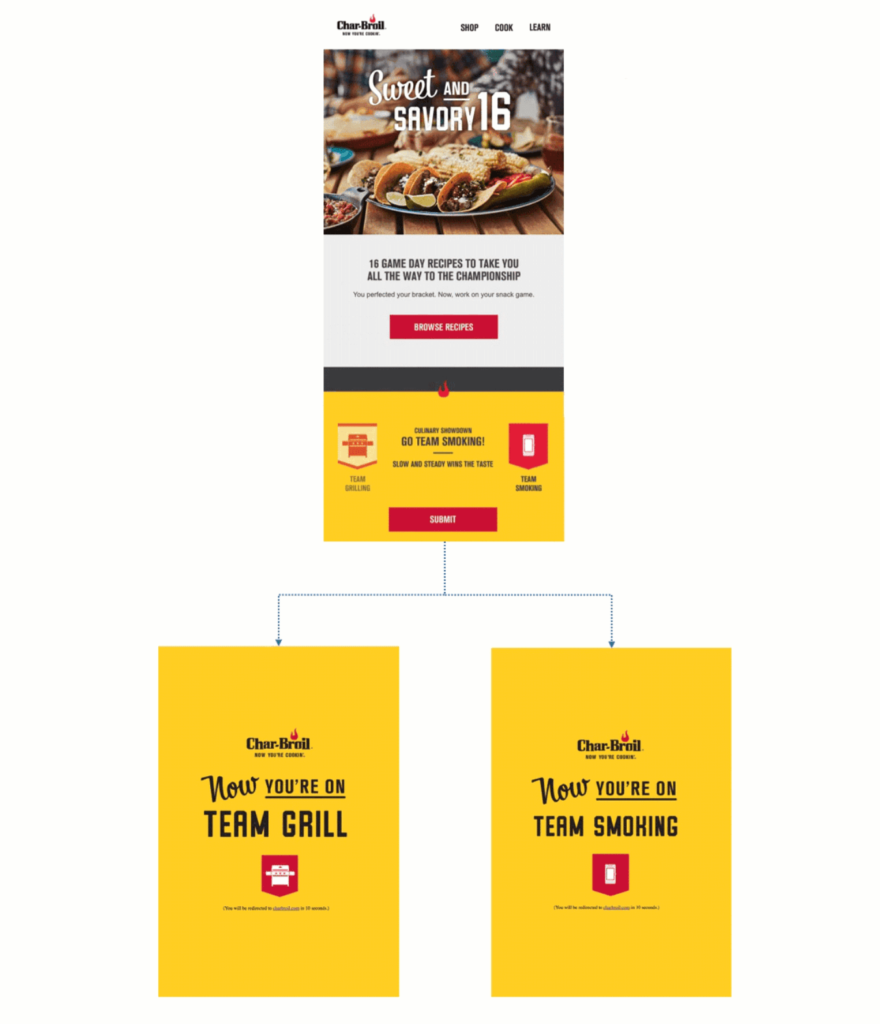Imagine you’re back in the year 2000 and I told you that in 20 years, you’d be using email marketing to not only fuel your business engine, but you’d be leveraging it to learn more about your audience as well. Mind blown, right? Now, here we are in 2021, and despite all of the digital technologies available at our fingertips as marketers, some of us are still stuck in the early 2000s.
Welcome to 2021 and Beyond:
We’re no longer confined to simple weekly newsletters, traditional transactional emails, and birthday/anniversary emails to talk to our consumers. In some cases, email marketing has the ability to operate off of a tuna budget while still giving your consumers the luxurious taste of caviar with quality blocking and tackling – you know, the “getting your hands dirty” stuff. An example of that is implementing engagement-based email marketing into your strategy, which allows your brand to get more ROI for each message that goes out to your audience, ultimately increasing the likelihood for engagement. Think of it as serving extremely personalized content to your audience as soon as they subscribe, without them having to ever complete a preference center. That initial welcome email can now consist of your products and services that they’ve already shown engagement with on your site or within emails prior to them subscribing. Maybe even “rewarding” them through a points system as they cross various thresholds or engaging with your brand across channels.
Here are two examples of what that could look like:
Example A)
Example B)

Creating the Playbook:
In Example A: the brand presented options to the audience in Campaign #1 and dependent upon their engagement, they received Campaign #2. From there, the consumer could be classified within a specific segment for future campaigns and on their website. While the customer journey doesn’t end there, this is a perfect example of how you can integrate your audience’s engagement on one channel and apply it to others.
In Example B: the brand predetermined a number of their objectives for the email channel, increasing on-site engagement and member growth being two of those. From there, they could create a point system for various actions the consumer could go on to take throughout their engagement with the brand. In this example, based on where the member is in their journey and point accumulation, they would receive a personalized module within their campaigns.
The Blocking and Tackling:
Now, no matter how good the coach and quarterback are, no team can be great without quality blocking and tackling. Of course implementing a “lite” loyalty strategy into your business’ digital marketing efforts is much easier said than done, which is why there should be several considerations in place prior to setting up your dynamic offense. A few things to consider in the process:
- Email Service Provider Selection
- Data Warehousing
- Data Importation and Migration
- Campaign Configuration and Automation
- Consumer Behavior Integration
- Engagement-Based Point Allocation
The Road to the Super Bowl:
Malcolm Gladwell, author of The Outliers, professes that it takes 10,000 hours of practice to become an expert, and while that claim has since been “debunked,” we believe it is important to accumulate as many hours as possible. Thankfully, years of experience on campaigns and deployments like this have allowed us to learn things along the way and apply them to future projects, just like Tom Brady has – how else do you win six championships?
If you would like to discuss how we can help on your road to the Super Bowl, contact us today.


